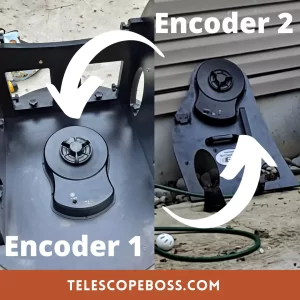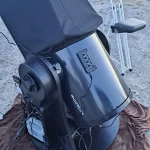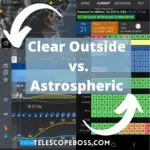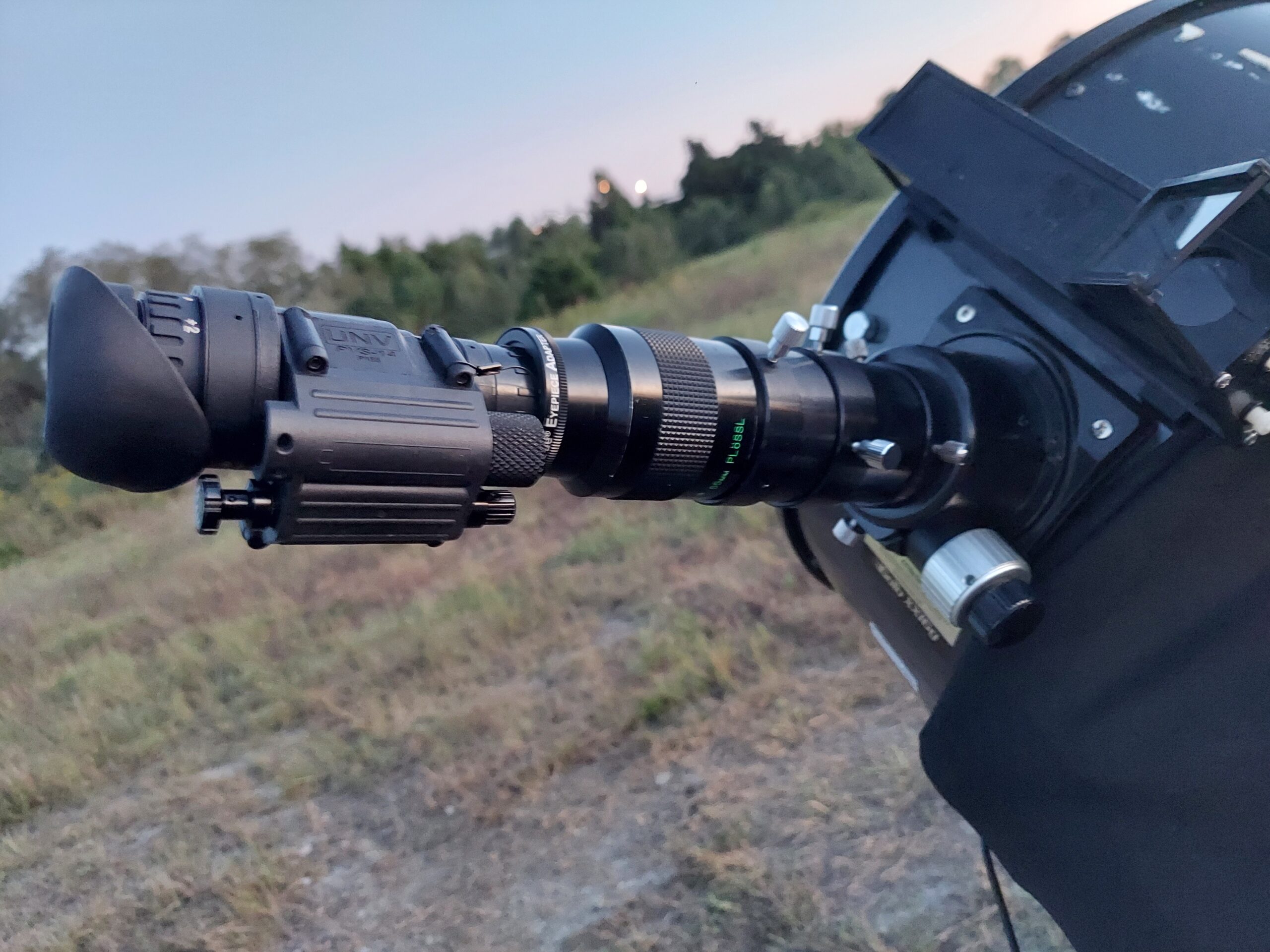I started my journey with a manual telescope and I think all beginners can enjoy observing with a manual telescope.
Most goto telescopes can not be used as a manual scope, and can only be slewed with the hand controller. Dual encoders or closed loop, more common on Dobsonian mounts, allow the use of manual and goto without aligning the scope again. Scopes that use Digital Setting Circles can only be moved manually, but do assist the observer in finding objects in the night sky.
I have the Orion Skyquest 16G and the goto system allows me to start my night with a two star alignment, but if I want to star hop then I can just move my scope without messing up my alignment.
There are two computers in my goto system. The primary encoder is what I am working with when I use my goto and do my alignment. If I move my scope manually the second computer keeps track of where I have moved it and tells the primary where we are now in the sky.
There are a few kinds of goto systems and they all work differently.

Types of GoTo Systems:
Digital Setting Circles or Push To
These systems tell you where to point the telescope, but they do not move the telescope. This is why they are called Push To.
They are just the encoders, without motors to move the scope.
It is a small computer that you attach to your mount. You perform a two star alignment then the small screen on the device tells you how far to move the scope in altitude and azimuth.
It measures the movements and tells you when you should be able to see the object in your eyepiece.
They may have tracking motors that allow the scope to follow an object in the sky once you have centered it manually, but this is uncommon.
These systems are purchased separate from your mount and can be attached to several kinds of mounts. This can turn your manual into a push to telescope.
It does require a basic knowledge of the night sky, but it is more flexible than a strictly goto scope that does not allow manual movement.
GoTo with Tracking
This is the most common type of Goto system. It is a motorized system that moves your telescope to point it at something in the night sky.
These systems also track an object. They move at the same rate as the object to keep it centered in the eyepiece.
These systems come installed on your telescope mount and are very expensive.
They may make observing more enjoyable and much easier for outreach, but they do require some knowledge of the night sky to set up and use properly.
Some of these systems cannot be moved by hand while they are aligned, if you move it it will no longer know where it is in the night sky and you will have to align it again. They can, however be moved using the hand controller.
Closed loop, or dual encoder systems are set up to be used as manual or goto.
There are two types of goto motorized setups. The number of drives, or motors that move the scope changes the quality of the tracking.
Single Axis is more difficult for astrophotography because they are harder to guide. You may find that you have to make frequent corrections with a single axis goto. The movement is more like a gradual stair step.
Dual Axis (altitude motor and azimuth motor) are more precise and keep the observing object more consistently positioned in the eyepiece. They track on a smoother arc.
Do all goto systems have tracking?
All the major brands do have tracking as part of the goto system, although some Bushnell telescopes do have a goto feature, but not a tracking feature. Tracking is a separate operation from goto, but they are programmed together for these devices. Tracking is helpful, but not necessary for visual astronomy, but necessary for long exposure astrophotography.
Some astrophotographers will track manually with their hands when photographing planets or the moon, but deep space objects, which emit less light, require longer exposure times.
Why use a goto as a manual telescope?
GoTo systems require electricity. If you find yourself unable to connect to power, you may want to use your GoTo as a manual so your observing session is not ruined.
There are a lot of ways to supply electricity to a telescope, an extension cord from the house, a battery pack or a generator are the most common ways. I chose to purchase the Dynamo Pro from Orion.
Just a few nights ago I forgot my Dynamo Pro, so I was unable to use my GoTo. I even had people come out and I was able to find plenty of things to show them without my GoTo system, because my first year as an astronomer, I had a manual.
I thought it was funny to be using such a large, heavy telescope that has such expensive technology and just be slewing it around manually.
I think it is important for almost everyone to start out with a manual.
If you were given, or purchased a GoTo telescope, but you’re still learning the sky, you can use it as a manual to get yourself started in astronomy. It is recommended that beginners use a manual first, so they can get acquainted with the sky.
When you use GoTo technology you have to orient the computer to your longitude and latitude and perform a two star alignment.
This is a simple set up, but does require some knowledge of the sky, and requires the user to be able to orient themselves. I think it is important that you start with a basic knowledge of the sky.
If your goto cannot be used manually, you can also use binoculars to learn the night sky! Do not be discouraged by your equipment, just start.
I started with a manual 10 inch dobsonian and now I have a goto. I do fear that I have lost some of my knowledge of the night sky.
How is a GoTo telescope different from a manual?
A GoTo is not a type of telescope, it is a system that attaches to a telescope and you can orient with the stars and the scope will point where it knows to find something. When using a GoTo, the computer moves the scope to find objects in the sky based on your position on earth. A GoTo can be attached to almost any kind of telescope.
When you are using a manual telescope, you must move the scope to find things in the sky using helps like a finderscope and a telrad.
GoTo telescopes can also track objects in the sky. When you begin observing you will quickly notice that some objects move out of your field of view very quickly. You need to move the scope to track the object as it moves across the sky.
GoTo telescopes track automatically, by moving the scope slowly to keep the object in the field of view.
This is super helpful when you are doing outreach, because you can show people objects and step away while they get a good look.
I recently bought an 16 inch Dobsonian truss tube with GoTo. Before this I had a 10 inch manual Dobsonian, and it has been great, so much so that I sold my 10 inch.
This is the system I use.
A telescope is always on some type of base, the two main types are Dobsonian and Equatorial. A Dobsonian base can move left to right, and up and down. It feels like a very smooth movement, but it is not smooth enough for long exposure photography.
Equatorial mounts have smoother movement, left to right, up and down and it can move smoothly in an arc for long exposure photography.
GoTo technology can be attached to a telescope on either mount, and it moves the telescope on the base mechanically.
Another consideration with a GoTo is that they require electricity, so if you travel with your telescope, you will need to bring a power source. While Dobsonian Telescopes are not the most portable telescope, I travel with mine, I have tips and pictures on this post.
You will also need to manage cords. There are lots of cords to manage, in the dark, to make sure the scope can move smoothly to the object you hope to observe. If the optical tube gets hung up on cords the mount will probably stop.
You will have to untangle in the dark then ask the computer to start again. I use my red headlamp to watch while my scope is slewing. You can hear the motor rev when it gets caught up.
Storing the cords is also super important. My cords got all jumbled together and I did not store them correctly and the connections got loose. I had to replace cords to be able to keep using my equipment. I travel with my scope frequently, so be sure that if you do you have a system.
GoTo telescopes are also very heavy. This makes the scope harder to transport.
Are GoTo Telescopes Good for Beginners?
I recommend that beginners buy a manual. This may just be me being a purist, there is a joy and excitement when you locate something in the sky yourself.
I am glad I learned with a manual, but I really appreciate my GoTo now. It is so much easier, especially for outreach. It also tracks the object, even imperfectly, allowing longer observing of a single object.
Manual telescopes are great for beginners because they are less expensive, more intuitive, but they require greater knowledge of the sky. It is important to learn how to orient yourself under the night sky, but a GoTo can make astronomy more enjoyable for those who do not have as much knowledge of the sky.
I think I have lost some of the knowledge that I had since I sold my manual and observe with only a GoTo.
Manual telescopes are lighter, easier to transport and easier to set up.
Because manual telescopes do not require heavy electronics, they are much quicker to set up and use.
Manual telescopes also have fewer points of failure, meaning they are harder to break. With a GoTo there are so many things that can go wrong, these things can ruin a whole night of observing.
I must say that I used my manual more than I use my GoTo because it was so much faster and easier to set up and transport.
Do I need an equatorial mount for a GoTo telescope?
GoTo technology is installed in the mount of a telescope, so you can use almost any telescope on a GoTo mount. If your telescope can be mounted on an equatorial mount, then it can be equipped with GoTo.
Dobsonian telescopes can also have a GoTo mount. That is the scope I have.
Equatorial mounts move more smoothly and are the only types suitable for astrophotography. Most people who do serious astrophotography use GoTo mounts to track objects as they move during the long exposure times required.
Alt-Az or Dobsonian mounts can be used for planetary and lunar photography as well.
Are GoTo Telescopes Worth It?
The cost of GoTo telescopes keep many beginners from purchasing them, but if you are researching your first scope, you may want to consider it.
Goto telescopes are worth it for anyone who is ready to use their scope regularly, wants to be able to share the hobby with people frequently or who are interested in getting into astrophotography of deep space objects. The ease of use with a Goto makes it fast to show someone new quite a few objects, and the tracking makes it possible to take pictures of deep space objects.
Planetary and lunar photography is possible without electronic tracking.
Consider buying a used telescope with our handy guide.
The first few times I used my GoTo, I was still learning the technology and it wasn’t working very well, but now I get a sense of accomplishment when I get the objects in my field of view, it is just as big of a sense of accomplishment as finding things manually.
The mount can be the most expensive part of a scope and a mount equipt with Goto is much more expensive than a manual. The difference is in the thousands of dollars.
The other things to consider are the weight and the set up time.
I did so much research to be sure that my GoTo would fit in my car and that I would be able to lift it. The thing is a beast. It takes close to an hour to set up and the largest piece weighs over 60 pounds.
The weight and extra set up are worth it for me, I regularly invite my neighborhood out to observe with me. The tracking makes it possible for me to find an object and just let them look, without fear that the object has left the field of view.
The weight has not been a huge factor for me.
If your telescope offers it, you should buy the specialized cases. I was hesitant because of the extra cost, but it would be impossible to transport it without the cases.
When I was in a new area, I was able to find things quickly and easily with my Goto. This was really important to me after I had the embarrassing experience of inviting my brother out to observe with me and not being able to locate things.






